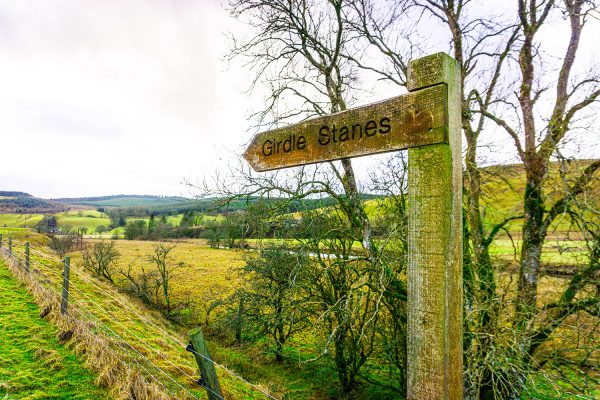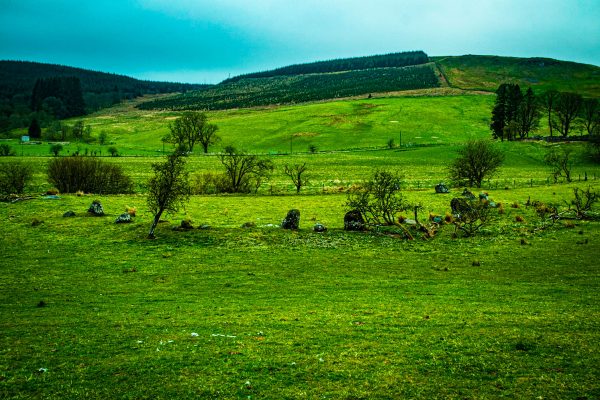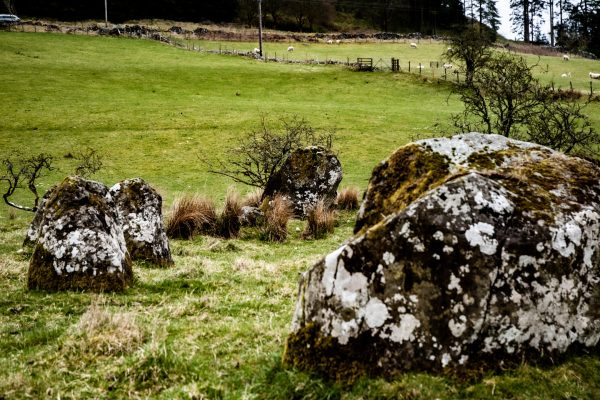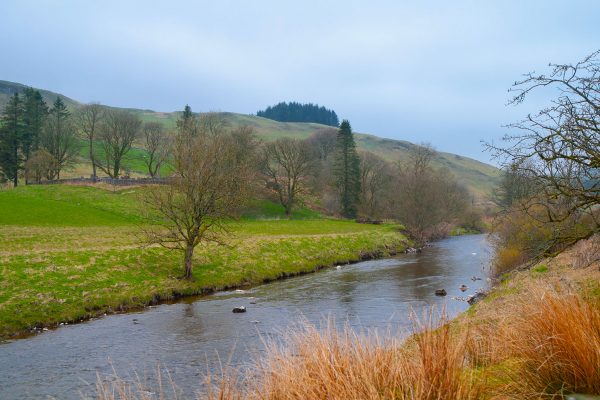The Girdle Stanes
Archaeologists who have studied the evolution of the stone circle think that the Girdle Stanes are of a more ancient pattern than the Loupin Stanes, perhaps dating back to 4000BC, and more akin to some of the Lake District circles.
1. Boonies: A Romano-British farmstead
2. Bailiehill: A Magnificent hill citadel
3. The Knowe: A fortlet, farm or fortified croft
4. Castle O’er: The most superb of the Esk Valley hill forts
5. Over Rig: A unique and perplexing site – fascinating but mysterious
6. Bessie’s Hill: A fort and enclosure
7. The Loupin’ Stanes: A small but impressive stone ring
8. The Girdle Stanes: A large stone ring
9. King Schaw’s Grave: A burial kist, once buried under a vast cairn
Archaeologists who have studied the evolution of the stone circle think that the Girdle Stanes are of a more ancient pattern than the Loupin Stanes, perhaps dating back to 4000BC, and more akin to some of the Lake District circles.
The Girdle Stanes are sited on the floodplain beside the Esk, and must once have been a nearly true circle of about 38m diameter.
Only 26 stones remain. Over centuries the rest of the circle – about another 20 stones at a guess – has been washed away by the Esk as it has moved over the flat low floodplain. On the riverbed you will see boulders which from their size may well have been from the circle.
The low stony bank could represent a “henge” but is just as likely to be the effect of field clearance (as at the Loupin Stanes) or of the planting and growth of the hawthorn hedge. The rather stunted hawthorn trees around the stones have been there as long as anyone can remember. There’s no indication how long hawthorns have surrounded the monument, or what significance they had for previous generations in the valley.
In 1993 a preliminary geophysical survey showed several pits inside the circle area, and more pits along the line of the circle. Very probably these contain bones or ashes of some of those who lived hereabouts 4000 years ago.








